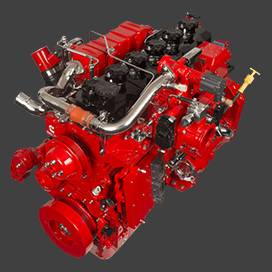Dec . 06, 2024 14:03 Back to list
A Guide to Effectively Cleaning Brake Drums and Shoes for Optimal Performance
How to Clean Brake Drums and Shoes
Maintaining your vehicle's brake system is crucial for safety and overall performance. Among the essential components that demand attention are the brake drums and shoes. Over time, brake drums and shoes can accumulate dirt, dust, and brake dust, which can weaken braking performance and increase stopping distances. Regular cleaning can help extend the life of your brake components and ensure your vehicle operates smoothly. Here’s a comprehensive guide on how to clean brake drums and shoes effectively.
Preparation
Before you begin, ensure that you have the necessary tools and equipment. You will need
- A jack and jack stands - A lug wrench - A brake drum puller (if necessary) - A wire brush - Brake cleaner - Safety goggles and gloves - A microfiber cloth - Optional a vacuum cleaner
Step 1 Safety First
Start by ensuring your safety. Park your vehicle on a flat surface and set the parking brake. Wear safety goggles and gloves to protect yourself from dust and debris. If you're working in an enclosed space, ensure proper ventilation.
Step 2 Lift the Vehicle
Using the lug wrench, loosen the lug nuts on the rear wheels (if you are working on rear brakes) or front wheels (if you are working on front brakes), but do not remove them completely yet. Next, use the jack to lift the vehicle off the ground and securely position it on jack stands. Once the vehicle is in the air, finish removing the lug nuts and take off the wheel.
Step 3 Inspect the Brake System
Before cleaning, it's essential to inspect the brake drums and shoes for any signs of excessive wear or damage. Look for cracks, grooves, or other defects on the drum surface and examine the shoes for thickness. If the components appear worn out, it might be time for a replacement instead of merely cleaning.
Step 4 Remove the Brake Drum
how to clean brake drums and shoes

If the brake drum is stuck, you may need a brake drum puller to safely remove it. Once removed, inspect the inside of the drum for any debris or buildup. If needed, remove any retaining clips or springs that hold the shoes in place; refer to your vehicle's service manual for specifics.
Step 5 Cleaning the Brake Drum
Using a wire brush, scrub the inside of the brake drum to remove dust, grime, and brake residue. Be sure to clean any grooves thoroughly, as they can significantly affect braking performance. After scrubbing, spray the inside of the drum with brake cleaner, which evaporates quickly and leaves no residue. Wipe with a microfiber cloth to remove any remaining dirt.
Step 6 Cleaning the Brake Shoes
Next, focus on the brake shoes. Using the wire brush, gently clean the surfaces of the shoes that make contact with the brake drum. Be careful not to damage the friction material. If the shoes have heavy buildup or contaminants, consider using brake cleaner for more intensive cleaning. Again, wipe them down with a microfiber cloth.
Step 7 Reassembly
Once both the brake drum and shoes are clean and dry, reassemble them. If you removed any retaining clips or springs, make sure to reinstall them correctly. Place the drum back onto the hub, and then carefully put the wheel back on. Hand-tighten the lug nuts before lowering the vehicle.
Step 8 Test the Brakes
After reassembling, lower your vehicle back to the ground and finish tightening the lug nuts in a star pattern to ensure they are evenly tightened. Once complete, pump the brake pedal a few times to seat the brake shoes against the drum properly. This step is crucial for restoring braking efficiency.
Conclusion
Cleaning your brake drums and shoes is a vital maintenance task that can enhance safety and prolong the life of your brake components. By following these steps, you can effectively clean your brake system and ensure your vehicle is performing at its best. Regular inspection and maintenance can also help you catch potential issues before they become serious problems, keeping you safe on the road. Remember, if you're ever unsure about the process or notice any severe wear, it’s always best to consult a professional mechanic.
-
ROR Web Development: Build Fast, Scalable, Secure Apps
NewsAug.17,2025
-
Scania Brake Drums: OEM Quality for Optimal Safety & Durability
NewsAug.16,2025
-
R.V.I: Advanced Remote Visual Inspection for Precision
NewsAug.15,2025
-
Discover HYUNDA: Innovative Vehicles, Equipment & Solutions
NewsAug.14,2025
-
R.V.I: Unlock Advanced Insights & Real-time Performance
NewsAug.13,2025
-
Kamaz Brake Drum: Durable & Reliable for Heavy Duty Trucks
NewsAug.12,2025
